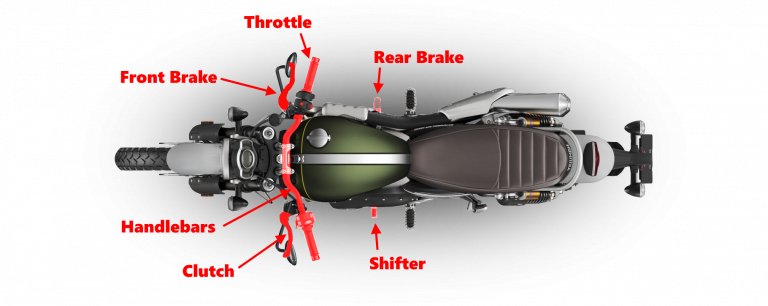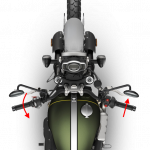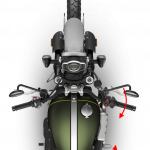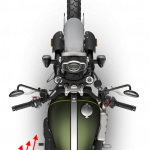STRAIGHT-LINE BRAKING
Before the explanation, let’s first talk briefly about primary controls. We at AMS consider our front brake, our rear brake, the throttle, the clutch, the shifter, and the (often overlooked because it is so obvious) handlebars our 6 primary controls. These must be so familiar to you as you become a licensed motorcyclist, that you need not have to look for them to use them. Imaging driving your car and having to look down to find the brake pedal, before using it. We describe Straight-Line Braking as a situation where you need to get your motorcycle to a full stop as quickly and as safely as possible in a straight line. Keep in mind, we start working on and perfecting this “Straight-line Braking” skill first thing Sunday morning, so you will have had a full day riding and a lot of that important muscle memory already “baked in” before your first attempts at this exercise.

Straight-line braking will involve all 6 primary controls. Of course there are instances where simply rolling off the throttle and applying both brakes, possibly downshifting to another gear will all that will be required on a basic ride out with your buddies.
We have broken down our Straight-line stopping process in 3 easy steps:

(1) Rolling off the throttle while pulling in the clutch. Our clutch and our throttle work together. Typically when taking off, we let the clutch out as we are rolling on the throttle. For straight line braking, it is the opposite. “Clutch in, throttle off.” With the clutch in and the throttle off, we are essentially coasting and ready for steps 2 and 3. This “2 handed” action in a static demonstration kinda resembles the ringing of a wet towel, if you squint your eyes and use your imagination.

(2) Use both brakes to bring the motorcycle to a stop. We will be reaching for and applying the front brake just as our foot applies pressure to the rear brake. Keep in mind, 70% of the total braking power comes from the front brake, 30% the rear. We work up to this. We start at 50%-50%, then progress to a comfortable 70%-30% as the exercise ends. Like all motorcycle controls, we must remember to be smooth and not abrupt when using our brakes. We often see unwanted throttle input as we pull in the front brake lever. This is usually indication that while learning, we are trying to do these steps too fast.

(3) Just before the bike comes to a complete stop, we need to be in first gear for safety reasons. When SHIFTING DOWN from Second Gear to First Gear, it requires a single tap down on the shifter with our left foot. However, 2 or 3 solid taps down on the shifter will insure that your machine is not accidently in neutral, so you will be ready to respond to anything coming up behind you. As the bike stops, our left foot goes down to stabilize the bike. Shoulder Check. We may simulate a situation where you need to move off quickly.
This is our straight line stopping process. The only change for what we would call an “Emergency Stop”, is the speed at which these 3 steps are performed. We later expand upon this during our “Braking in a Curve” exercise.
This is such an important skill!
Your instructor’s goal is to not only help you through the weekend to earn your certificate, but for you to have this and other skills on hand when you finally turn the key on your new shiny motorcycle. To emphasis this point, our instructors spend a significant amount of personal time working on their own straight-line braking skills on an on-going basis. You may have noticed us riding around in empty parking lots, turning, stopping. Like all sports, motorcycling requires practice.